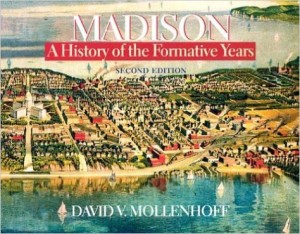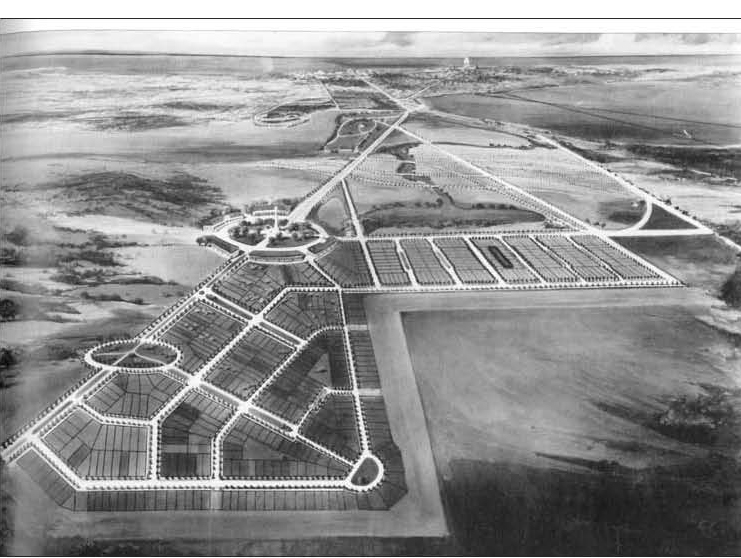
Lake Forest drawing from David Mollenhoff’s “Madison: A History of the Formative Years”
Take a fascinating peek into Madison’s past and explore the haunting story of Lake Forest — Madison’s “Lost City” — when you participate in the most unusual walk in the UW-Madison Arboretum repertoire.
In previous years, the free “Tour of the Lost City” was offered once a year, usually around Halloween. Join this year’s “Lost City” tour from 1 p.m. until 3:30 p.m. on Sunday, October 27, 2019 and learn about what Madison historian David Mollenhoff calls “One of the most extraordinary land developments ever launched in Madison.” Due to high demand, a second tour has been added for 2019. The date of the second tour is Sunday, November 3, 2019.
Important Update (9/3/2019): Statement from the UW Arboretum: ” Space is limited, advance registration is required for this free annual event. Registration opens October 1, register by October 23. Meet at the Visitor Center. See also November 3 tour and November 16 class.”
 Lake Forest is a failed 1920s residential area in the midst of the Gardner Marsh section of the Arboretum. If you have some older Madisonians in your tour group, you may hear tales about how this was once a popular parking spot for high school students. Now, however, nature has reclaimed the land and not many traces of the development remain.
Lake Forest is a failed 1920s residential area in the midst of the Gardner Marsh section of the Arboretum. If you have some older Madisonians in your tour group, you may hear tales about how this was once a popular parking spot for high school students. Now, however, nature has reclaimed the land and not many traces of the development remain.
[click to continue…]
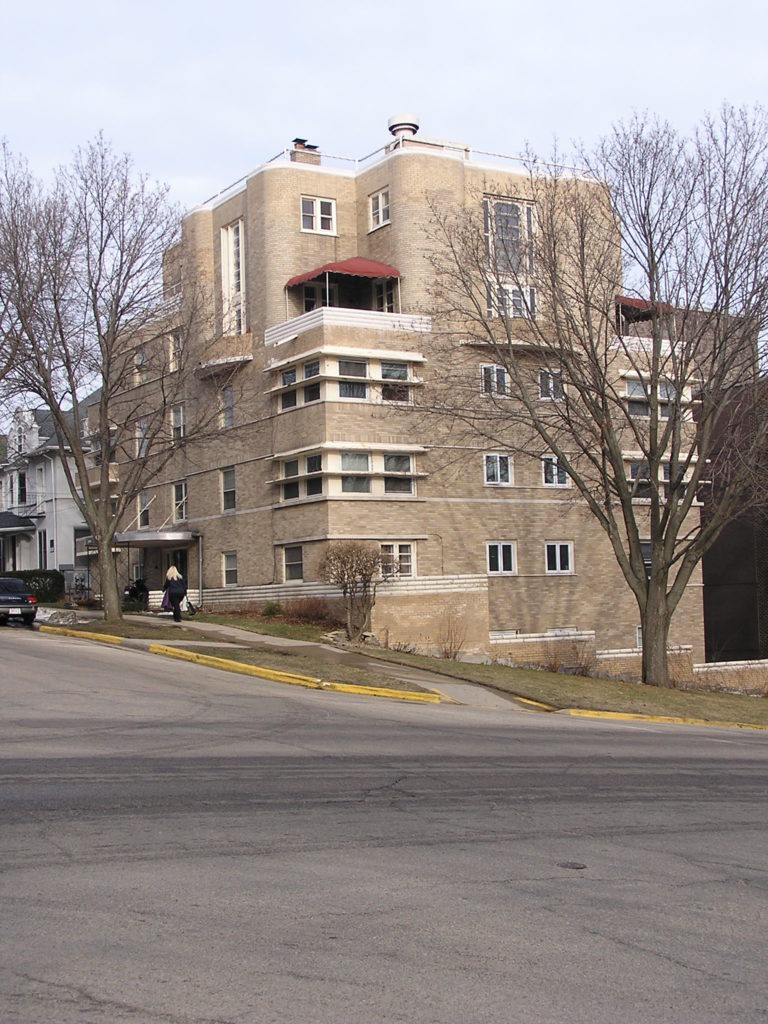
The Quisling Towers apartments on Mansion Hill in Madison, Wisconsin
Some of the best, most insightful walking tours of Madison’s historic neighborhoods are the subject of a series of free, self-guided tours published from 1986-2002 by the Madison Landmarks Commission and other local organizations interested in historic preservation. Originally published as small paperback brochures, a limited number were available free at Madison’s public libraries – and they were snapped up quickly. They are now out of print. Happily, however, they are available free from the City of Madison Planning Division as downloadable PDFs.
Even though some of these guides are almost 30 years old, most of the information they provide is still accurate – although you will discover that some buildings have vanished in the intervening years.
A list of the available brochures (with a link to the downloadable version) is available on a separate page at Quintessential Madison.
A slightly different version of this post was originally published on the Madison Central High School History blog on January 1, 2008. It is a slightly longer version of a page-one feature story I wrote for The Wisconsin State Journal that was published on October 31, 2007 (with different photos). Despite the upbeat tone of the story, six years later more than a few people remain concerned about the future of the arch and MATC’s commitment to preserving it.- NG
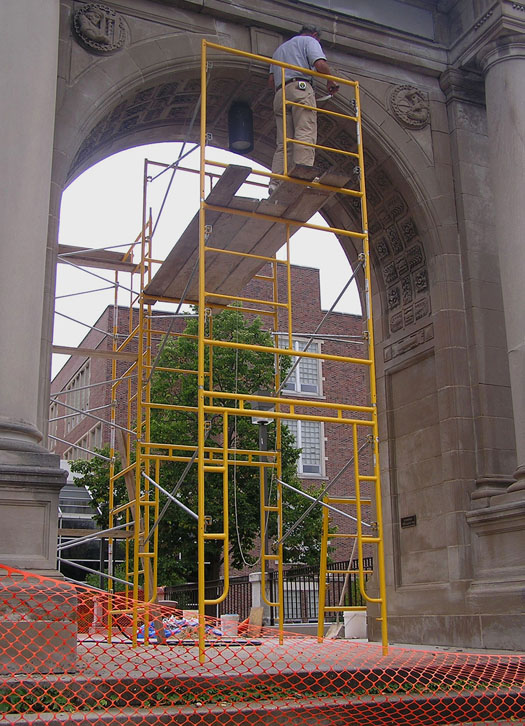
Stonemason and sculptor Jacob Arndt working on the restoration of the Central High School arch in October 2007
A lone worker stood atop yellow scaffolding and began repairing the Central High arch on Wisconsin Avenue earlier this month. The sight brought sighs of relief from admirers of the arch, who noticed what seemed to be visible signs of structural disintegration this summer.
The arch is all that remains of the Cass Gilbert-designed Madison Central High School building torn down in 1986 to make room for a MATC parking lot. At that time, the arch was allowed to stand as a means of mollifying local preservationists, Central alumni, and the occasional fan of Gilbert, an architect whose works also include the Woolworth Building in New York City and the U.S. Supreme Court Building in Washington, D.C.
In 2002, a proposed development plan involving the Madison Children’s Museum threatened the arch. It survived because the Museum found another home.
However, many Central alumni and preservationists worried the arch’s increasingly fragile condition continued to pose a threat to its existence. Some, including Central alumnus Mark Pankow, tried unsuccessfully to organize a project committee to raise funds to pay for restoration of the arch or to move it to another location. Others feared that MATC, which owns the arch and the property on which it stands, was deliberately allowing the arch to disintegrate so it would eventually become unsafe and have to be torn down.
Now the worrying can cease and the conspiracy theories can be abandoned.
[click to continue…]
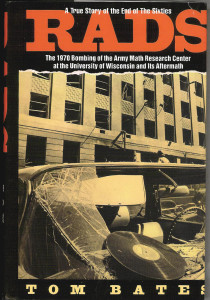 The truth is simply this: I have no memories of the Sterling Hall bombing. I’d worked until late that night and I slept soundly. Although I lived only a few blocks away, the sound of the explosion did not awaken me, nor did the subsequent wail of police and emergency vehicle sirens. My most vivid memories of the Sterling Hall bombing were created more than two decades later.
The truth is simply this: I have no memories of the Sterling Hall bombing. I’d worked until late that night and I slept soundly. Although I lived only a few blocks away, the sound of the explosion did not awaken me, nor did the subsequent wail of police and emergency vehicle sirens. My most vivid memories of the Sterling Hall bombing were created more than two decades later.
August 24th, 2010 marks the 40th anniversary of the bombing of Sterling Hall on the University of Wisconsin-Madison campus. One man, researcher Robert Fassnacht, was killed in the blast. Four men were accused of carrying out the bombing. Three were tried and found guilty. One has never been apprehended.
But this event affected countless lives in a myriad ways. For some, the aftermath brought swift changes. For others, the consequences were more incremental, more subtle: ripples from a pebble tossed in a stream, “butterfly effects.”
[click to continue…]
So last night the Madison City Council voted 15-4 to make the Pink Plastic Flamingo the city’s official bird – and of course now you want to buy not one, but two. That’s right two; the original “official” pink flamingos, designed by Don Featherstone for Union Products, were always sold in pairs: one upright, the other with its head toward the ground.

Photograph of pink plastic flamingos on Bascom Hill in 1979 This photograph of pink flamingos on Bascom Hill is ©Michael Kienitz. It is used here with his permission.
But perhaps you only need to buy one. If you look closely at the iconic Michael Kientiz photograph of the September 4, 1979 assemblage of pink flamingos on Bascom Hill – the memorable event that led to the City Council’s historic vote nearly three decades late, they all appear to have their heads toward the ground. Then if you compare a close-up photograph of one of the original 1,008 Bascom Hill flamingos now in the possession of the Wisconsin State Historical Society with the Wikipedia photos of what are allegedly the “original” Don Featherstone designs, you’ll also note definite differences in the shape of the bird.
[click to continue…]
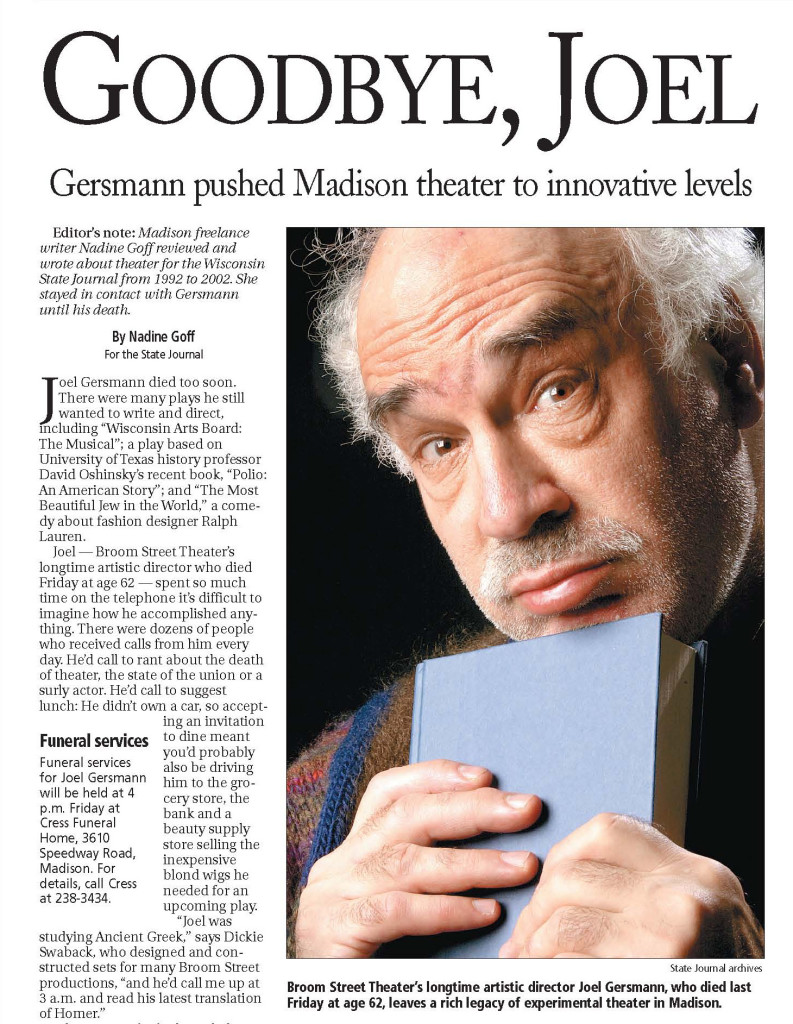 Joel Gersmann hated blogs: He thought they were filled with scurrilous gossip and the inane, meandering thoughts of people who, if they really wanted to write, should be writing serious stuff…like plays, and novels — or at least articles about his beloved Broom Street Theater.
Joel Gersmann hated blogs: He thought they were filled with scurrilous gossip and the inane, meandering thoughts of people who, if they really wanted to write, should be writing serious stuff…like plays, and novels — or at least articles about his beloved Broom Street Theater.
Joel died four years ago today. Were he still alive, I think he would have changed his mind about blogs — and he probably would have a Facebook page for the theater if not himself. Once he began to see how useful and effective the Internet could be for disseminating news about Broom Street Theater, as well as locating obscure, out-of-print books and CDs, he would have twisted arms and convinced people to blog on his behalf while he used his mighty intellect to create new plays and finish translating Homer.
Click here to read the full story
 Lake Forest is a failed 1920s residential area in the midst of the Gardner Marsh section of the Arboretum. If you have some older Madisonians in your tour group, you may hear tales about how this was once a popular parking spot for high school students. Now, however, nature has reclaimed the land and not many traces of the development remain.
Lake Forest is a failed 1920s residential area in the midst of the Gardner Marsh section of the Arboretum. If you have some older Madisonians in your tour group, you may hear tales about how this was once a popular parking spot for high school students. Now, however, nature has reclaimed the land and not many traces of the development remain.






